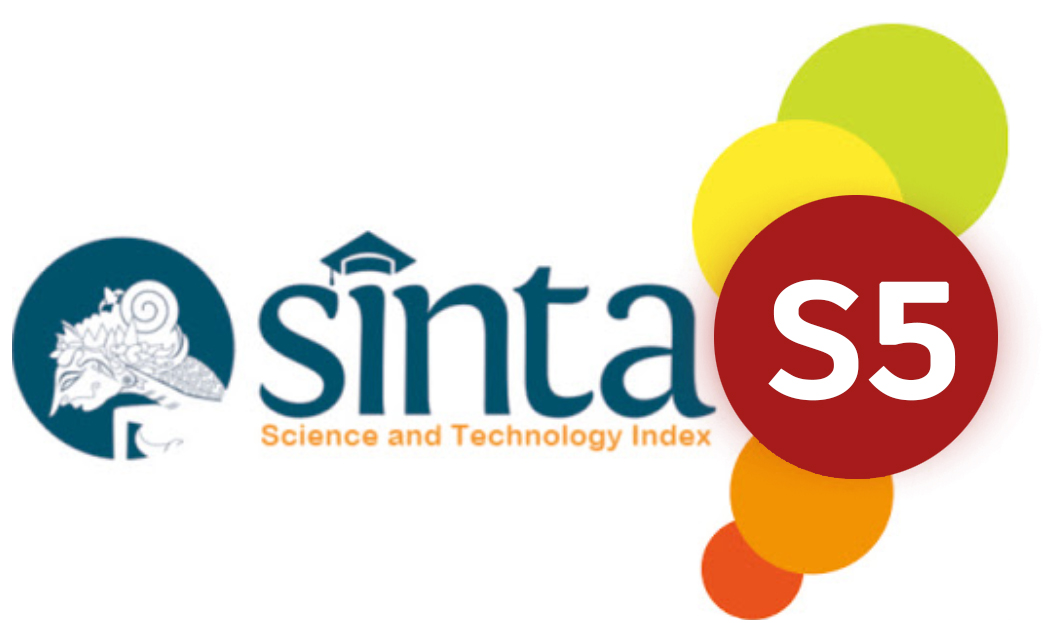Upaya Meningkatkan Hasil Belajar Servis atas Permainan Bolavoli Menggunakan Media Pembelajaran Alat Bantu pada Siswa Kelas X Smk Taruna Bakti Kertosono Tahun Ajaran 2022/2023
DOI:
https://doi.org/10.53863/kst.v4i02.612Abstrak
The purpose of this research is to improve the learning outcomes of serve on volleyball in class X students of SMK Taruna Bakti Kertosono Academic Year 2022/2023. This research is a Classroom Action Research (CAR). This research was conducted in two cycles and consisted of four stages in each cycle, namely planning, action, observation and reflection. The subjects in this Classroom Action Research were class X students of SMK Taruna Bakti Kertosono Academic Year 2022/2023 with a total of 28 students consisting of 19 male students and 9 female students. Sources of data in this study came from students, researchers and teachers who acted as collaborators. Data collection techniques using tests and observations. Data validity uses data triangulation techniques. This classroom action research is a percentage to see trends that occur in learning activities. the results of the analysis obtained a gradual increase from pre-cycle to cycle I and from cycle I to cycle II. This can be seen from the results of service learning for volleyball games for pre-cyclical students, it shows that out of 28 students cognitively, 8 students or 28.57% have completed, while 20 students or 71.42% have not completed and from the psychomotor aspect there are 7 students. or 25.00% complete. Then the results of learning to serve for volleyball games shown by students in the first cycle of the cognitive aspect showed an increase of 28.57% where there were 16 students or 57.14% included in the complete category while for the psychomotor aspects showed an increase of 35.71% where there were 17 students or 60.71% fall into the complete category. In cycle II the improvement of student learning outcomes is better. Cognitive aspects increased by 21.43% from the first cycle and 50.00% from the pre-cycle, while the psychomotor aspects increased by 25.00% from the first cycle and 60.71% from the pre-cycle. In cycle II the cognitive aspect had 22 students or 78.57% in the complete category, 6 students or 21.42% of students were in the incomplete category and for the psychomotor aspect there were 24 students or 85.71% in the complete category, 4 students or 14.28% of students are in the incomplete category. Based on the results of the study, it was concluded that the application of learning models using assistive devices can improve service learning outcomes for volleyball games in class X students of SMK Taruna Bakti Kertosono Academic Year 2022/2023.
Keywords: top serve, volleyball, Classroom Action Research
Referensi
Abidin, Y. (2016). Desain Sistem Pembelajaran Dalam Konteks Kurikulum 2013. Bandung: Refika Aditama.
Agus Kristiyanto. (2010). Memperluas Desain Permainan Bolavoli di masyarakat kita. Surakarta: UNS Press.
Ahmadi, N. (2017). Panduan Olahraga Bola Voli. Era Pustaka Utama.
Ali, H. F. S., et, A. (2021). The effect of John Zahorek’s model on learning transmitter reception and handling (forward overhead) in volleyball and students’ attitudes toward the game. Materials Today: Proceedings.
Anderson, D. (2018). Kerangka Landasan untuk Pembelajaran, Pengajaran, dan Asesmen (Revisi Taksonomi Pendidikan Bloom). Yogyakarta: Pustaka.
Arsyad, A. (2017). Media Pembelajaran. Jakarta: Raja Grafindo Persada.
Baharuddin, & Wahyuni, E. (2017). Teori Belajar dan Pembelajaran. Jogjakarta: Ar-Ruzz Media.
Baharudin, & E. N. W. (2017). Teori Belajar dan Pembelajaran. Yogyakarta: Ar-Ruzz Media.
Beutelstahl, D. (2016). Belajar Bermain Bola Voli. Bandung?: Pionir Jaya.
Budiarti, W. W., Hanif, A. S., & Samsudin, S. (2019). Volleyball Smash Learning Model for Middle School Students. Budapest International Research and Critics in Linguistics and Education (BirLE), 2(4), 239–244.
Dimyati, M. (2013). Belajar dan Pembelajaran - Google Books. https://www.google.co.id/books/edition/KONSEP_DASAR_BELAJAR_DAN_PEMBELAJARAN/GXz7DwAAQBAJ?hl=id&gbpv=1&dq=Dimyati,+Mudjiono,+2013&pg=PA209&printsec=frontcover
Hergenhahn, B.R., Olson, M. H. (2018). Theories Of Learning (Teori Belajar). Kencana Prenada Media Group.
Hidayat, W. (2017). Buku Pintar Bola Voli. Jakarta: Anugrah.
Husdarta, J.S. & Saputra, Y. . (2018). belajar dan pembelajaran pendidikan Jasmani Dan Kesehatan. Bandung?: Alfabeta.
Junaidi, S., & Muharram, N. A. (2021). Pendekatan Metode Bermain III-I Untuk Meningkatkan Kemampuan Mengumpan Pemain Bolavoli Pada Tim Putri Puslatkot Kota Kediri 2021. Sport Science, 21(2), 126–135.
Kitsiou Andriana, dkk. (2020). Tendencies of the volleyball serving skill with respect to the serve type across genders. Jurnal of Physical Education and Sport (JPES), 564 – 570.
Komara, E. (2019). Belajar dan Pembelajaan Interaktif. Bandung: PT. Refika Aditama.
Kristiyanto Agus. (2010). Penelitian Tindakan Kelas - Google Books. https://www.google.co.id/books/edition/KERANGKA_PEMBINAAN_OLAHRAGA_DISABILITAS/gbQHEAAAQBAJ?hl=id&gbpv=1&dq=agus+Kristiyanto,+M.Pd&pg=PA143&printsec=frontcover
Listina, R. (2012). Mengenal Olahraga Bola Voli. Yogyakarta?: PT Balai Pustaka.
López-Ferrer, A., Marco-Ahulló, A., et., A. (2022). Effectiveness of the Type of Feedback on Learning to Pass in Volleyball. Journal of Motor Learning and Development, 1(Aop), 1, 1–16.
M Yamin. (2018). Paradigma baru pembelajaran. Jakarta: Gaung persada press.
Mark K Smith, D. (2019). Teori Pembelajaran dan Pengajaran: Mengukur Kesuksesan Anda dalam Proses Belajar Mengajar Bersama Psikolog Pendidikan Dunia. Jogjakarta: Mirza Media Pustaka.
Muharram, N. A., & Kholis, M. N. (2018). Upaya Peningkatan Hasil Belajar Servis Atas melalui Model Pembelajaran Problem Based Introduction dalam Permainan Bola Voli. JURNAL ILMIAH PENDIDIKAN CITRA BAKTI (JIPCB), 5(2), 103–107.
Muharram, N. A., & Kurniawan, W. P. (2019). Pengembangan Model Latihan Fartlek Untuk Meningkatkan Kemampuan Fisik Pemain Bolavoli (Studi Pengembangan Pada Pemain Bola Voli Putra Tingkat Intermediet Di Kota Kediri). JURNAL KOULUTUS, 2(1), 50–60.
Muharram, N. A., & Putra, R. P. (2019). Pengembangan Buku Saku Mobile Learning Berbasis Android Tentang Signal-Signal Wasit Bolavoli Kota Kediri.
Muharram N.A, Suharjana., Irianto Djoko Pekik., et. al. (2022). Development Theory And Practice Volley Ball. deepublish?: Yogyakarta.
Munir. (2017). Pembelajaran Afeksi. Tadris: Jurnal Penelitian Dan Pemikiran Pendidikan Islam, 9(1), 58–70.
Nasuka. (2019). PEMAIN BOLA VOLI PRESTASI. LPPM Universitas Negeri Semarang.
PBVSI. (2016). Peraturan Permainan Bola Voli. Jakarta: PBVSI.
Rahyubi, H. (2017). Teori-Teori Belajar Dan Aplikasi Pembelajaran Motorik. Bandung: Nusa Media.
Rahyubi, H. (2018). Teori-Teori Belajar Dan Aplikasi Pembelajaran Motorik. Bandung: Nusa Media.
Rusman. (2013). Metode-Metode Pembelajaran: Mengembangkan Profesionalisme Guru. PT Raja Grafindo Persada.
Sagala, S. (2018). Konsep dan Makna Pembelajaran. Bandung: Alfabeta.
Setiakarnawijaya, Y., Widiastuti, W., Taufik, M. S., Kuswahyudi, K., Awaluddin, A., Sina, I., ... & Muharram, N. A. (2022). Moderate-intensity Exercise Decreases Cortisol Response in Overweight Adolescent Women. Physical Education Theory and Methodology, 22(3s), S30-S36. Physical Education Theory and Methodology, 22(3s), S30–S36.
Sujarwo. (2017). PERKEMBANGAN BOLA VOLI MODERN. Yogyakarta: UNY Press.
Sujarwo. (2021). Scouting Statistik Bola Voli. Yogyakarta?: UNY Press.
Supriyadi, M. (2018). Pelaksanaan Proses Belajar Mengajar Pendidikan Jasmani Olahraga dan Kesehatan pada Sekolah Dasar. Elanggang Olahraga: Jurnal Pendidikan Jasmani Dan Olahraga, 1(2), 64–73.
TC Mutohir, et, A. (2013). Konsep Teknik Strategi dan Modifikasi. Surabaya: Graha Pustaka Media Utama.
Ye, C. (2020). Cultivating Interest in Volleyball PE Teaching Considering Interactive Programmed Teaching Method. International Conference on Virtual Reality and Intelligent Systems (ICVRIS), 1018–1021.
Unduhan
Diterbitkan
Cara Mengutip
Terbitan
Bagian
Lisensi
Hak Cipta (c) 2022 Achmad Zulva Ainun Faqih,Nur Ahmad Muharram,Irwan Setiawan

Artikel ini berlisensi Creative Commons Attribution-NonCommercial-NoDerivatives 4.0 International License.
Authors retain copyright and grant the journal right of first publication with the work simultaneously licensed under a Creative Commons Attribution-ShareAlike 4.0 International License that allows others to share the work with an acknowledgment of the work’s authorship and initial publication in this journal

















